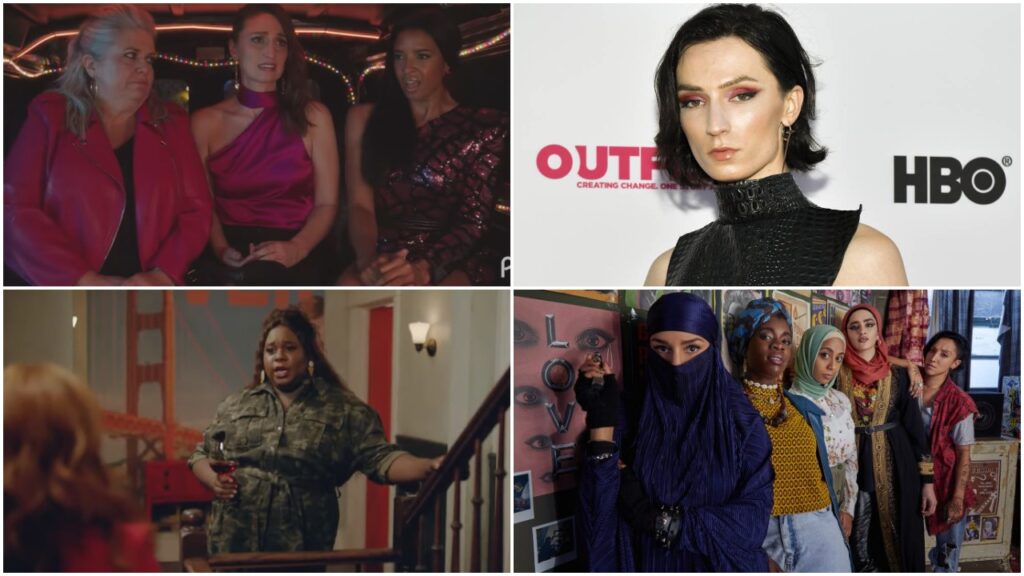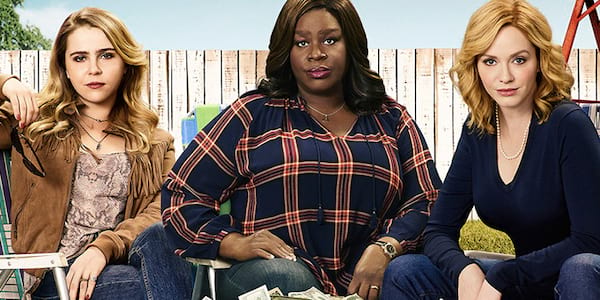
The success of "The Jetsons", "The Twilight Zone", and other TV shows the versatility of television. The beloved sitcom "The Jetsons", a classic of the rerun era, lasted just one season (1963). Lucille Bal's hit sitcom, "The Beverly Hillbillies", ran for five seasons (1951-1957). It was one of the earliest hits shows.
NBC's "Community"
TV viewers love "Community", which is a cult hit. It features a diverse cast, and it is set at a Colorado community college. The show originally debuted on NBC, airing alongside "The Office," "30 Rock," and "Parks and Recreation." After five seasons on NBC, the series migrated to Yahoo! Screen the series' final season. It is one of the first linear programs to transition to digital platforms. The original cast includes Joel McHale as Jeff Winger and Britta Perru as Britta Perry. Brie as Annie Edison, Rash (Craig Pelton) and Jeong (Ben Chang) are back.
It has taken a long time to make the movie for Community. It will air seven years after the end of the series. Dan Harmon will direct it, who also created the show. It will also feature Joel McHale (creator), Danny Pudi, Alison Brie and Jim Rash.
NBC's 'The West Wing'
If you're a fan of politics, you're probably familiar with NBC's "The West Wing" and its fictional president. The series touches on real-world topics and goes beyond the common. Topics range from the 1972 Olympic Games, in Munich, to America's invasion of Grenada and the Exxon Valdez wreckage. In addition to the fictional president, other government officials are featured throughout the show.

The fifth season features both domestic and international issues. There is controversy about Supreme Court appointments as well as a bold plan to save Social Security. The sixth season of "The West Wing," focuses on President Bartlet's campaign to win the next election. The series follows several candidates, including one Republican, as they fight in the primary.
NBC's "The Beverly Hillbillies".
NBC cancelled a variety of shows during the Rural Purge. This popular program offered a nonjudgmental look at life outside of city limits. The series ran nine seasons. However, the preferences of critics didn't matter to fans. The show was a success. Here's a look at the series' unique qualities.
The Beverly Hillbillies was a very popular sitcom. The original CBS sitcom, it ran for nine seasons between 1962 and 1971. It was created by Paul Henning, a cracker barrel surrealist responsible for such TV hits as "Green Acres" and "The Real McCoys." Its popularity earned it over 200 episodes as well as a host Emmy nominations. The theme song for NBC's "The Beverly Hillbilly", which airs on NBC, tells the story about Jed Clampett (a widowed mountain man) who sells his drilling rights and becomes president of Oklahoma Oil Company, John Brewster. The Beverly Hillbillies become instant millionaires.
Netflix's "Stranger Things"
Netflix's original sci-fi horror series "Stranger Things", is set in 1980s Hawkins (Indiana). The show follows a group made up of kids, and the supernatural incidents that take place in this fictional town. Shawn Levy (creator) and Dan Cohen (creator) were inspired by Cold War conspiracy theory and popular culture of that time.
The fifth season of Netflix's "Stranger Things" will take place around 1988 or 1989, putting the show around the age of its protagonist, Gaten Matarazzo, who will turn twenty in September 2022, when production begins. Collider states that season five writing will begin in August 2022. A tweet from the writers' account also confirmed that it would begin in 2022.

NBC's "The Daily Show".
NBC's The Daily Show hosts Jon Stewart. It also has a number correspondents. These correspondents include Steve Carell and Jon Lovitz as well as Kristen Schaal and John Oliver. All of them contribute on a daily basis to the show.
The Daily Show was created as a parody of local news programs. LizzWinstead created the show. The first episode aired on Comedy Central back in 1996. It was advertised as a replacement for Politically Incorrect, which moved to ABC earlier that year. The show's co-creators, Lizz Winstead and Madeleine Smithberg, had been executive producers of several other comedy shows. Smithberg graduated from Binghamton University and was later an executive producer of Steve Harvey’s Big Time as well as a talent coordinator on Late Night with David Letterman.
FAQ
Advertisers are spending a lot of money to watch TV.
Advertisers can spend a lot of money to advertise their products on TV. They also spend large sums of money convincing consumers to buy their products.
This is achieved by spending money on research in order to determine what people like and don't love about their products.
These information are used by advertisers to design advertisements that will appeal to consumers.
What industry uses TV to advertise the most?
The automotive industry.
They advertise their cars so often because they are always trying to improve them. They want them to be safer, faster, and better.
They also need to keep people interested in buying their products as well.
So, what are they doing? They advertise all over.
On billboards, bus stops, television, radio, magazines, newspapers, you name it.
These ads aren't just for any old ads.
They are all very different. Some are hilarious, others informative, some are fun, some are inspiriting, some are entertaining and some are educational.
No matter what type of advertisement you see, it is likely to be effective.
How effective is television advertising?
Advertising must be able to connect with the target market. Television advertising is cost-effective compared to other media such as radio and print ads. Unfortunately, television advertising doesn't always deliver results as people are constantly bombarded with too many messages.
One study found that viewers can only remember two commercials from three different spots simultaneously. This proves how difficult it is for a single commercial to have a lasting impact.
Multiple mediums are the best way for your message to be heard. If you are trying to promote a product which helps people lose weight, then advertise in magazines, newspapers, and on television.
This will allow for you to reach a larger audience and increase awareness about products.
What are the differences between commercials?
Television Commercials, Radio Commercials, & Print Ads are the three major types of commercials.
TV Commercials are typically 30 seconds in length. They're frequently used to increase brand awareness.
Radio commercials can be longer than 1 minute and are used for product marketing.
Print ads are shorter (usually 2-3 minutes), and they're usually aimed at specific audiences.
How long does it usually take to make a commercial
It depends on the project's size. For a small project, one person may be needed to film the footage. A large project may require many people to work together.
A 30-second spot can usually be completed in between 2-5 days.
Why should I be concerned about TV?
You must care about TV if your business is a success.
It's one of the biggest sources of revenue for many companies.
And if you're thinking about starting a business, you should learn everything you can about TV advertising.
This will enable you to decide which ads you should run, what places you should spend your money, as well as how to market your product effectively.
How do TV Ads get delivered?
TV ads are typically delivered via cable, satellite or IPTV.
Today, there are many ways that content can be delivered to consumers. Yet, companies still have a limited number of options for how they distribute their advertising.
This is because they all look at the same metrics when deciding what delivery method to use.
If your goal is to measure the effectiveness of an advertisement by its viewing time, then it's important to make sure people can access it on as many platforms possible.
You will want to make sure your ads reach as many eyes as possible if you are evaluating ad effectiveness on the basis of impressions.
The problem with this is that they don't always go together.
If, for example, you are delivering an advertisement across multiple platforms and only one platform offers high-quality videos, it may result in fewer views on that platform.
You might miss some opportunities if you only look at time as a measure of your success.
Statistics
- To get estimated costs for airing a 60-second TV commercial in different regional markets, check out the following figures in this TV ad pricing chart from the media experts at Casual Precision. (fitsmallbusiness.com)
- Video-ad views on OTT (over-the-top) devices grew 63% year over year in Q3 2016, and the trend is expected to continue, further crippling traditional TV advertising. (clearcode.cc)
- Television is a great brand awareness tool - Almost every American has a television, with 83 percent of adults having two or more, and American households keep their televisions on for 8.1 hours each day on average. (marketingevolution.com)
- Radio is extremely accessible – 95 percent of cars have radios, and 99 percent of homes have radios. (marketingevolution.com)
- In fact, when the ad first launched, Dos Equis quickly became one of the fastest-growing beers, increasing its sales by over 22%. (qualitylogoproducts.com)
External Links
How To
How Do I Choose Which Type Of Advert To Run On Television?
When choosing between traditional print advertisements, digital billboards, radio spots, television commercials, and video marketing, there are several things to consider.
First, choose whether you want short-term or long-term results.
An advertisement that generates immediate sales must have short-term exposure. In other words, your advertisement must be able to make people aware immediately of your product/service.
This is a long-term strategy to increase awareness over a longer duration. This could mean weeks or months.
Next, you need to choose between one-off campaigns or ongoing campaigns.
One-off campaigns are usually used when you want to promote a single event, such as a new product launch or a holiday sale. These campaigns are usually very costly as they require extensive planning and preparation.
However, they are usually less cost-effective than ongoing campaigns. They involve running the same ad every week or month.
Finally, you need to decide how much you want to spend.
There are two options: invest large or small amounts in advertising. A smaller amount of advertising will have a higher cost per impression than more.
But, advertising with a smaller budget won't reach as many people.